Azure waters of the Indian ocean welcomed me as the flight landed at Ngurah Rai airport, Bali. The airstrip is so close to the ocean that for a second I had doubts if I was on a sea plane. Immigration and visa on arrival was a breeze and was least time consuming. The procedure required me to show them my passport, return tickets and hotel vouchers. No forms to be filled and no photographs required. The only question that I asked was,' purpose of visit'. The charges are $ 25. There is also an airport tax while leaving the island which is $ 22 or Rp 200,000 and Rp 40,000 if you are taking a domestic flight.
As we drove from the airport to the hotel on the narrow but well laid roads, I was amused to note that every third structure was a temple or a shrine. I was told that every house has a shrine of its own and the number of temples (including shrines) in Bali, both small and big was a staggering 200,000. It is not without a reason that Bali is sometimes referred to as 'Island of Gods'. Despite Indonesia being a Muslim nation, Hinduism is the prominent religion in Bali. Stories and characters from Ramayana and Mahabharata are widely seen either in the form of statues, writings or dances. There are some magnificently carved structures which you see as you drive along the roads of Bali. In addition to their captivating architecture and carvings, temples like Uluwatu and Tanah Lot also offers spectacular vistas. These temples are a big draw as the sun sets, and I was one amongst the numerous other awed visitors who stared in oblivion at the stunning hues over the horizon. The other famous ones are Besakih temple (the most important Balinese temple), Gua Gejah (cave temple), Ulun Dhanu, Taman Ayun and Thritha Empul.
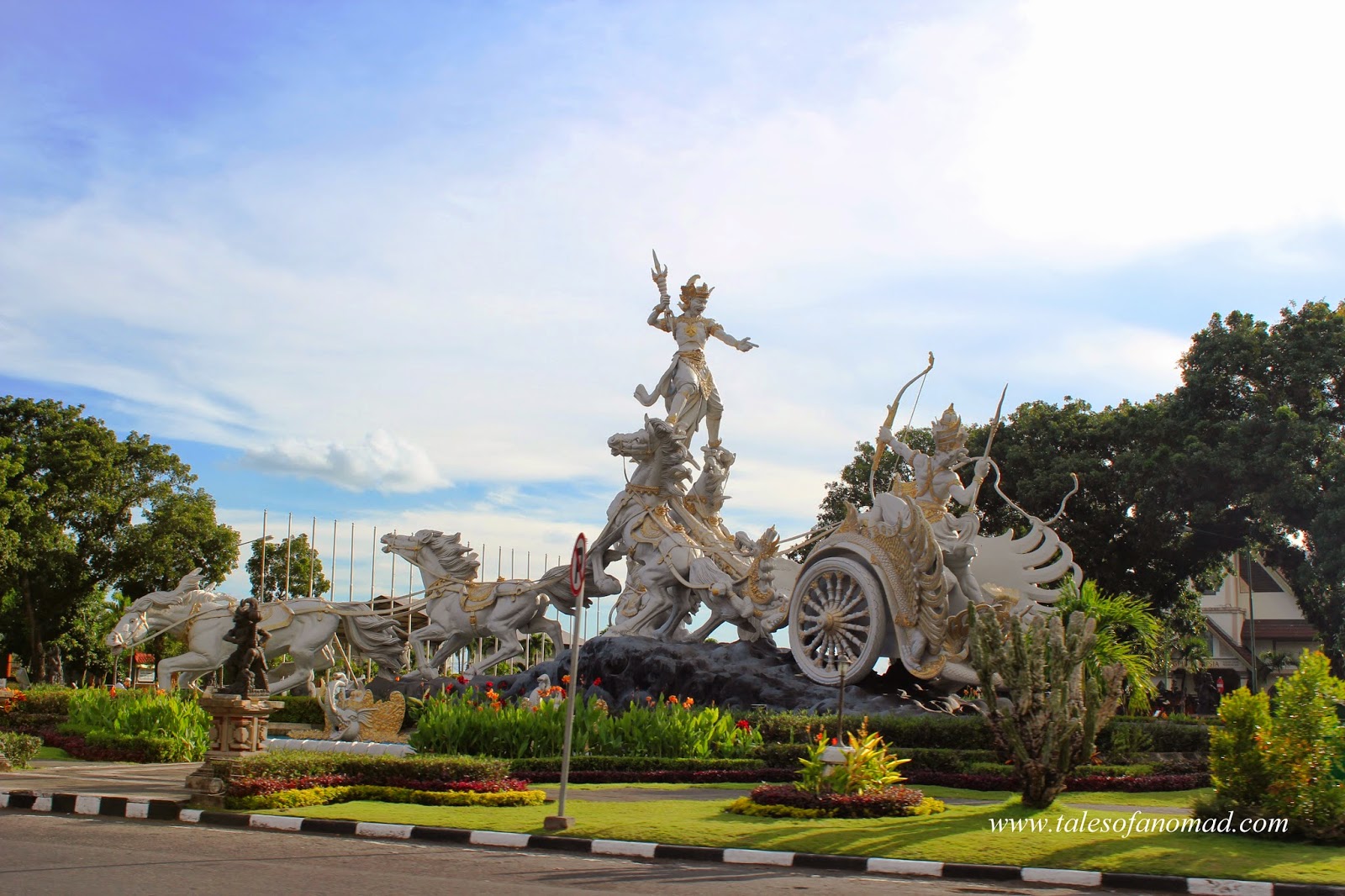 |
| A magnificent creation by the road |
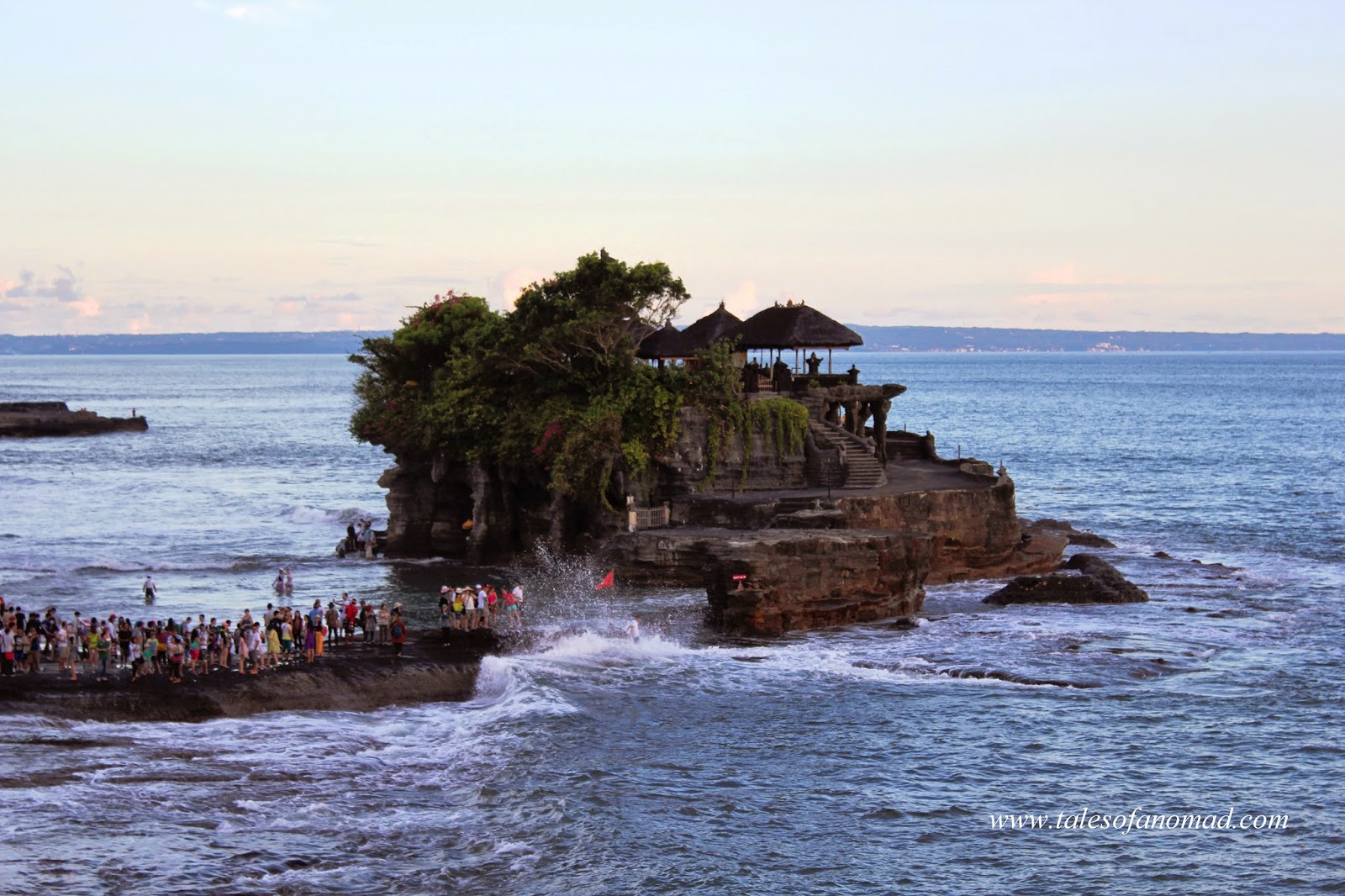 |
| Tanah Lot temple |
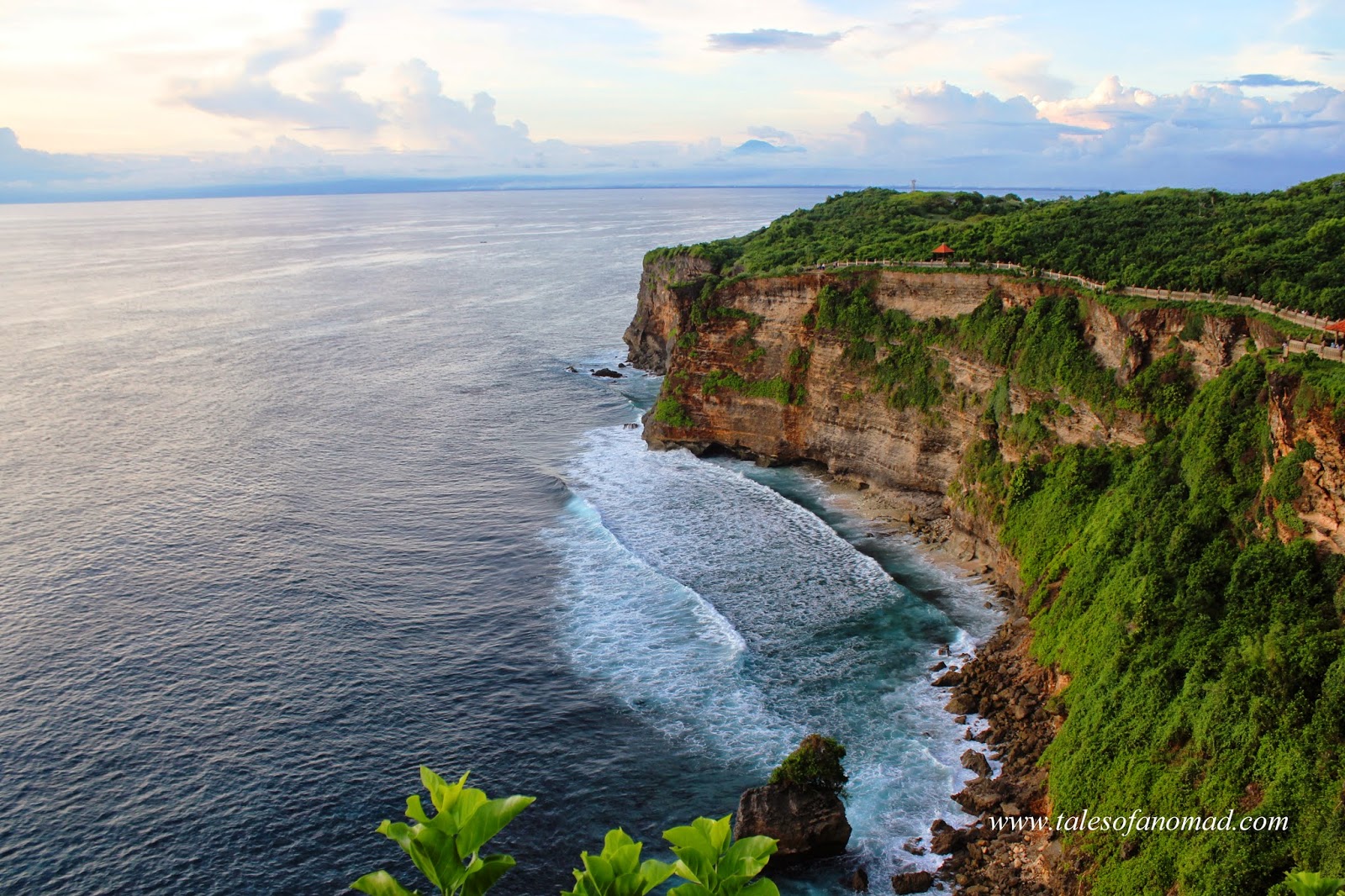 |
| View from Uluwatu temple |
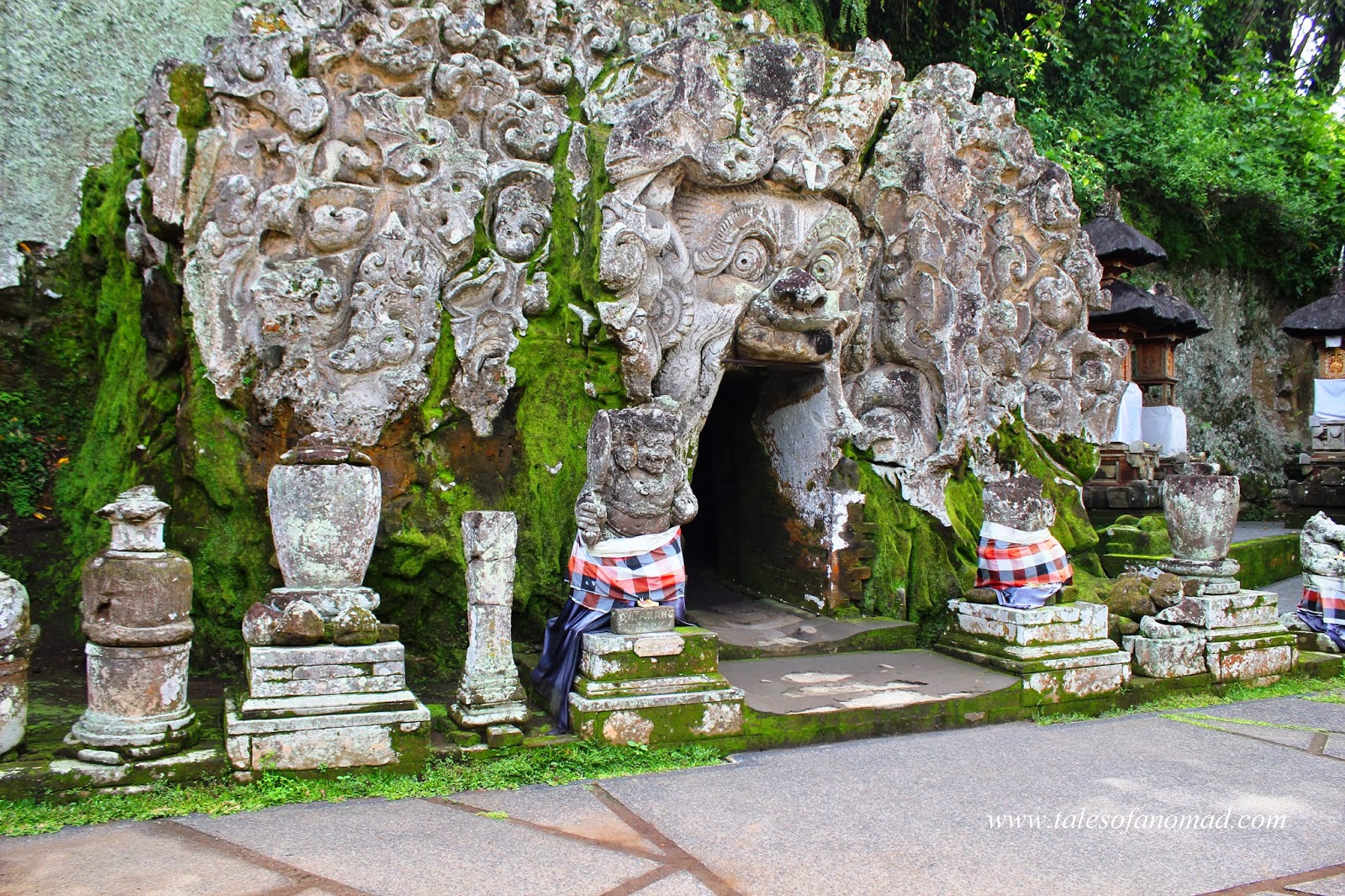 |
| Gua Gejah |
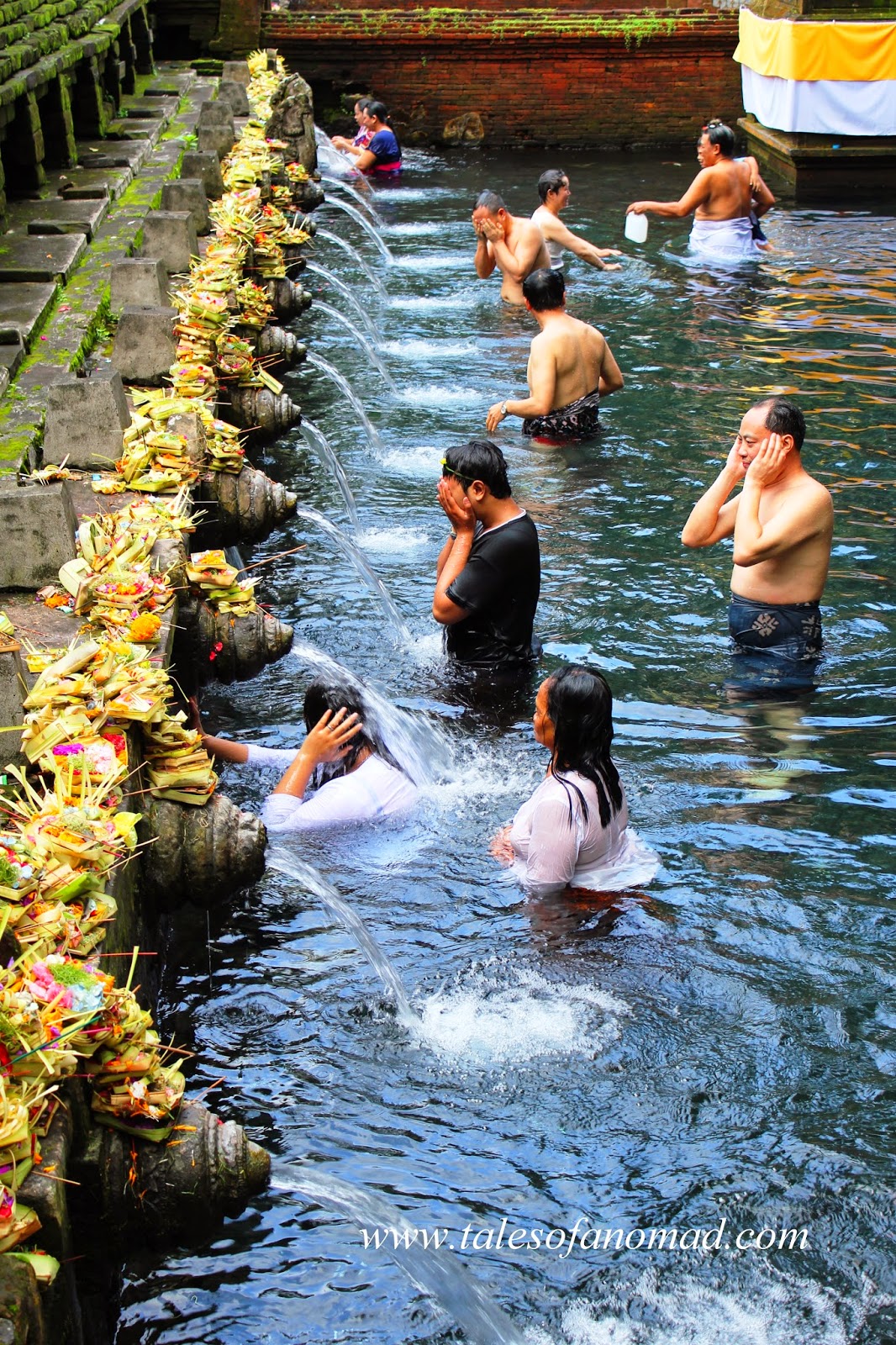 |
| Thirtha Empul |
Bali reminded me of Kerala with its coconut trees, greenery, beaches, paddy fields and hills. Kuta with its swarming foreign crowd, wonderful beach, numerous restaurants and a lively nightlife definitely garners the biggest attraction. It is also a great place to shop, stroll, people watch and laze around. Half an hour away from Kuta is Ubud, which undoubtedly is the cultural capital of Bali. The streets of Ubud are a treat for art lovers. Paintings and wood works galore the streets and I was quite mesmerised by the beautiful works. There are many art galleries, wood work and silverware shops, and dance performances in and around Ubud which lures every culture vulture. The paddy fields of Ubud where stepped terracing is specialized gives a rustic charm to this cultural centre. From the sultry southern Bali it is a nice little drive past the paddy fields and greenery to Kintamani. There was a sudden dip in the temperature as the imposing Mt. Batur stood before me intimidating everything in its vicinity. This active volcano looked spellbinding with the gorgeous lake Batur by its side. The blue waters, green hills and black mud (due to the lava) made for a captivating landscape. It was an enchanting experience to have lunch at one of the many restaurants gazing at the beautiful landscape. As I traversed the roads of Bali, I found many statues in both wood and stone works of Buddha, Ganesha and other mythical figures waiting to be sold. I was told they have a huge export market.
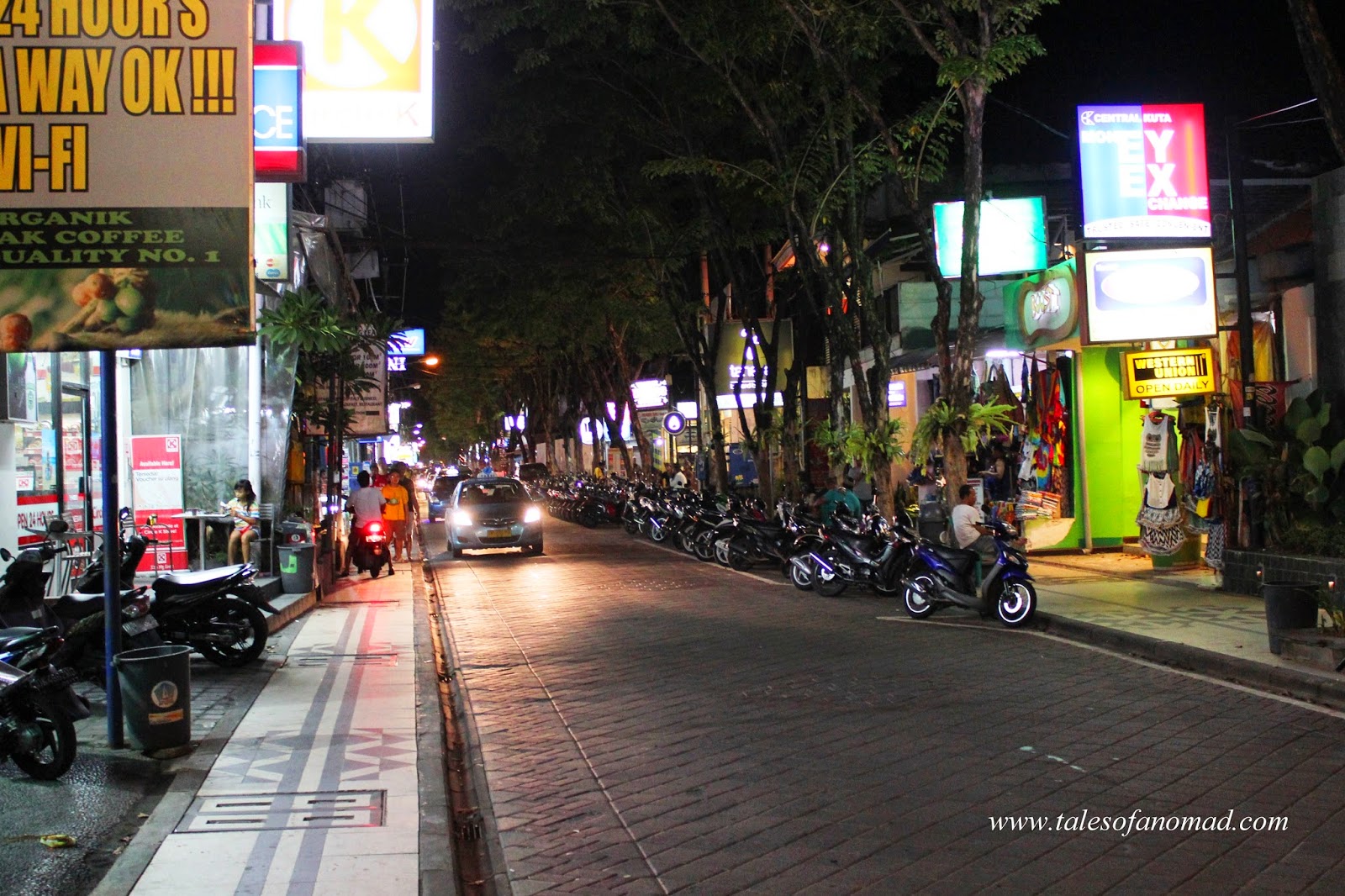 |
| Main street in Kuta |
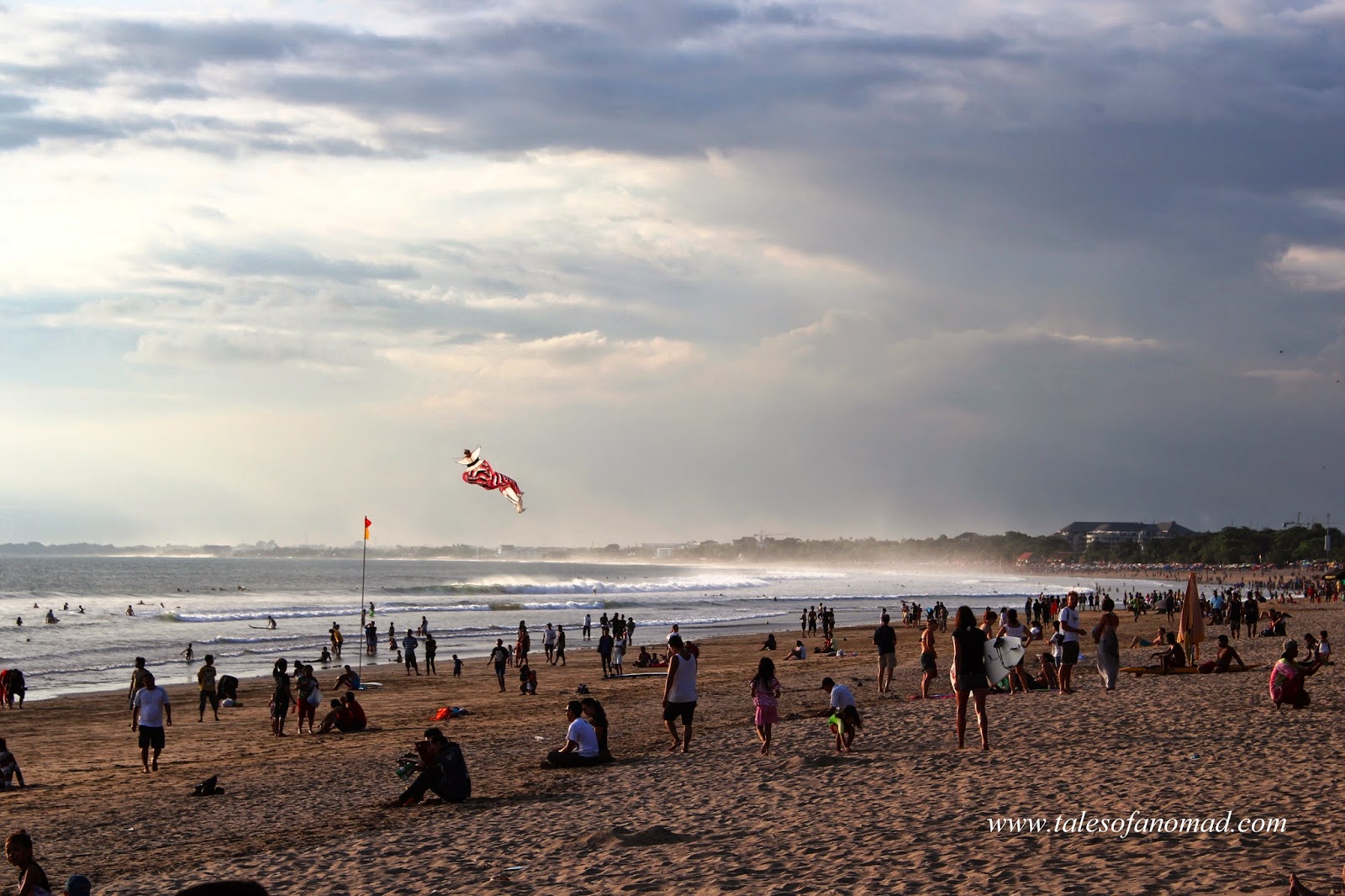 |
| Kuta beach |
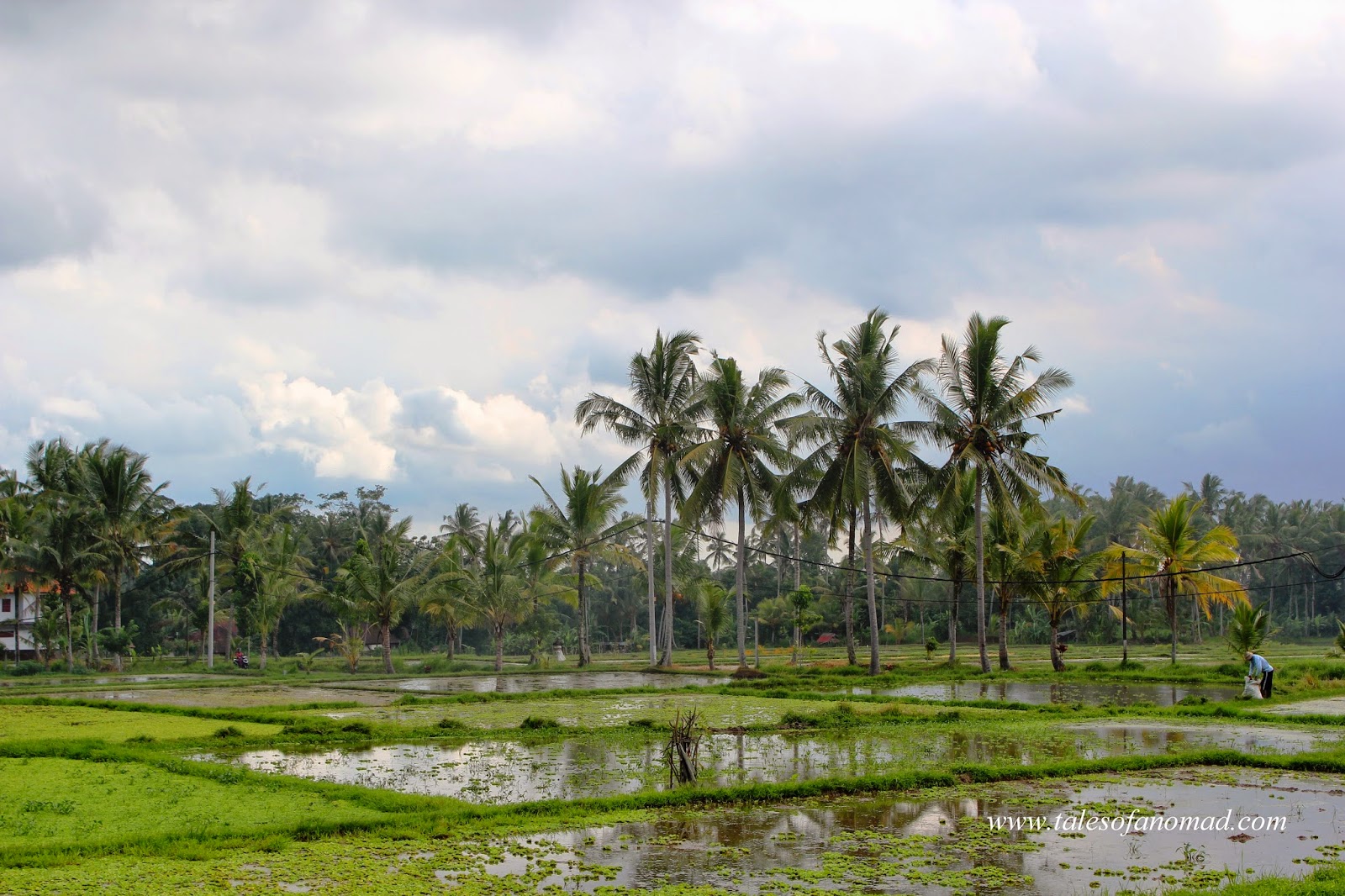 |
| Paddy fields in Ubud |
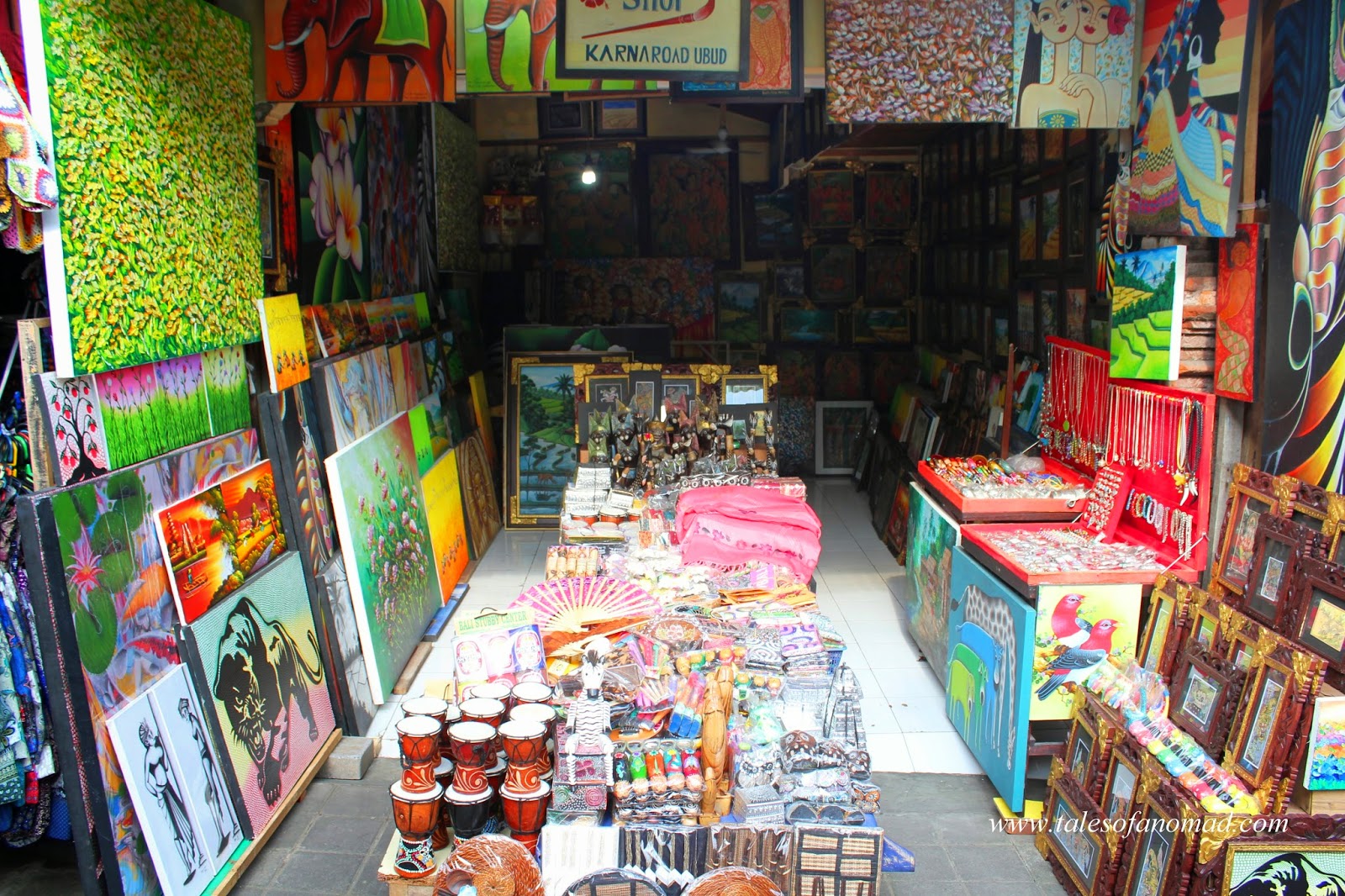 |
| An art shop in Ubud |
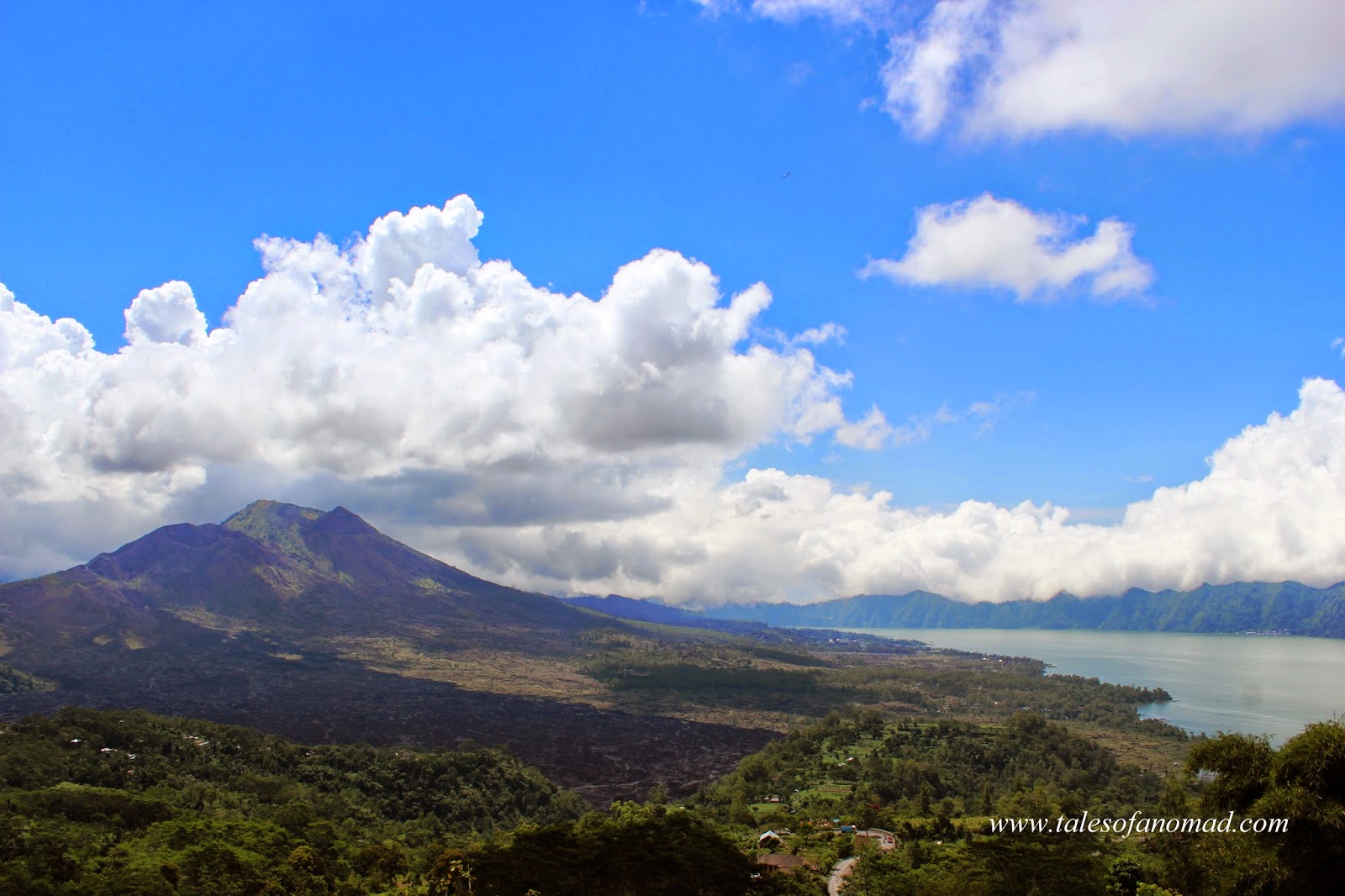 |
| Mount Batur and Lake Batur |
Bali boasts of a wonderful coast line with Bali sea to its north, Java sea to its west and Indian ocean to its south. The turquoise blue and emerald green waters greets you as you walk on those white sands. Visitors and tourists prefer Kuta and Legion beach due to its crowd and surf. Surfing is big in this region and many head with their board into the blue waters of Kuta in the evening. Undoubtedly the sunsets are a sight to behold. However there are no beach shacks here, but beer is easily available. The beach at Sanur is more beautiful and serene than the one in Kuta. Situated on the eastern coast, Sanur does have numerous open air restaurants on the beach, is devoid of the crowd, has water sport facilities and offers great vistas of the azure sea and the distant hills. The beach at Jimbaran is another beautiful beach in southern Bali. As I had been there during the day, it was less crowded and seemed like I had the whole beach to myself. I did chase a few crabs on the beach without much success. Being very close to the airport, a major attraction was viewing the numerous flights that landed as I sipped my beer in the scorching heat. For water sport adventures, Nusa Dua beach offers great options.
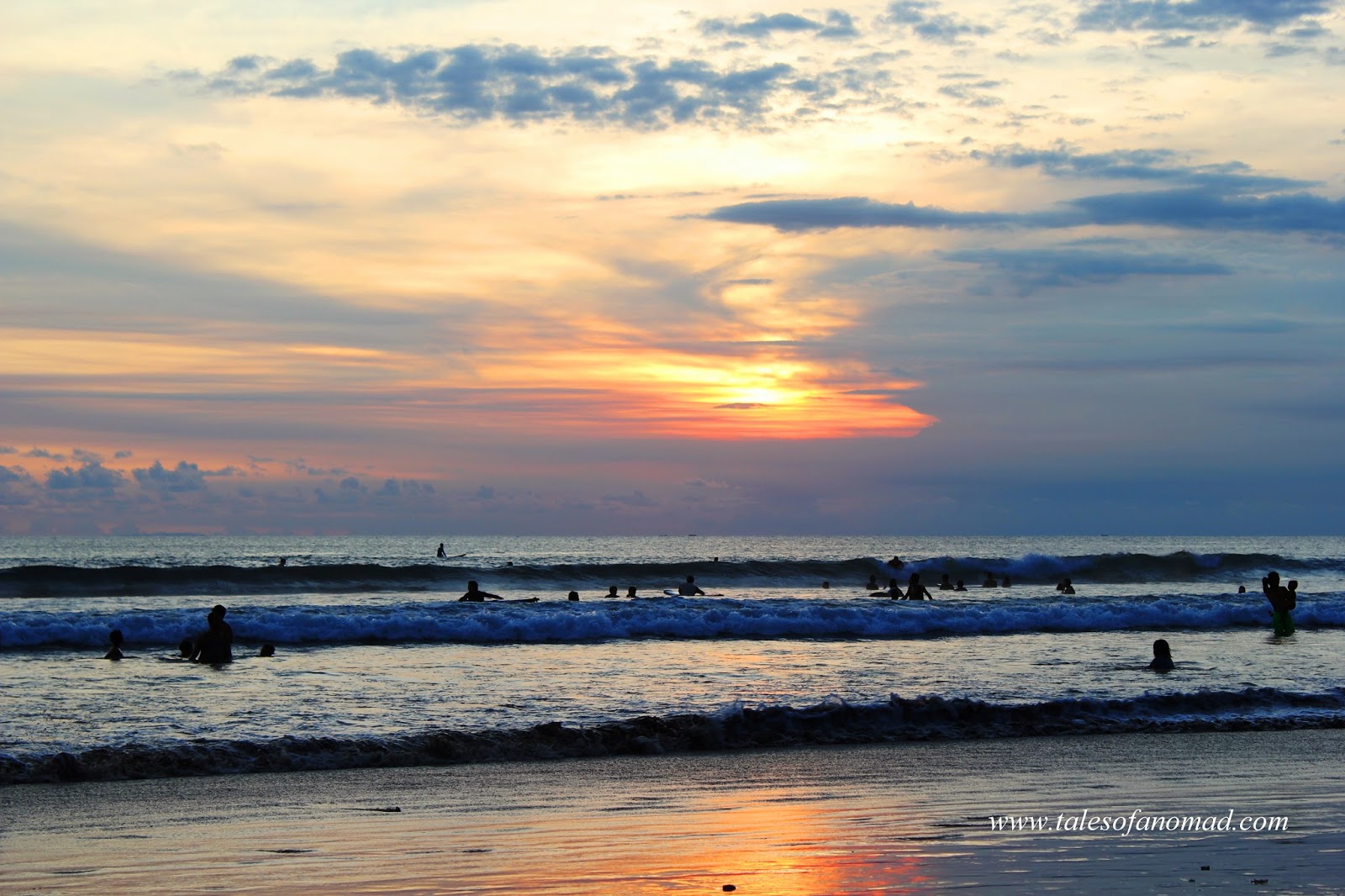 |
| Kuta beach |
 |
| Sanur beach |
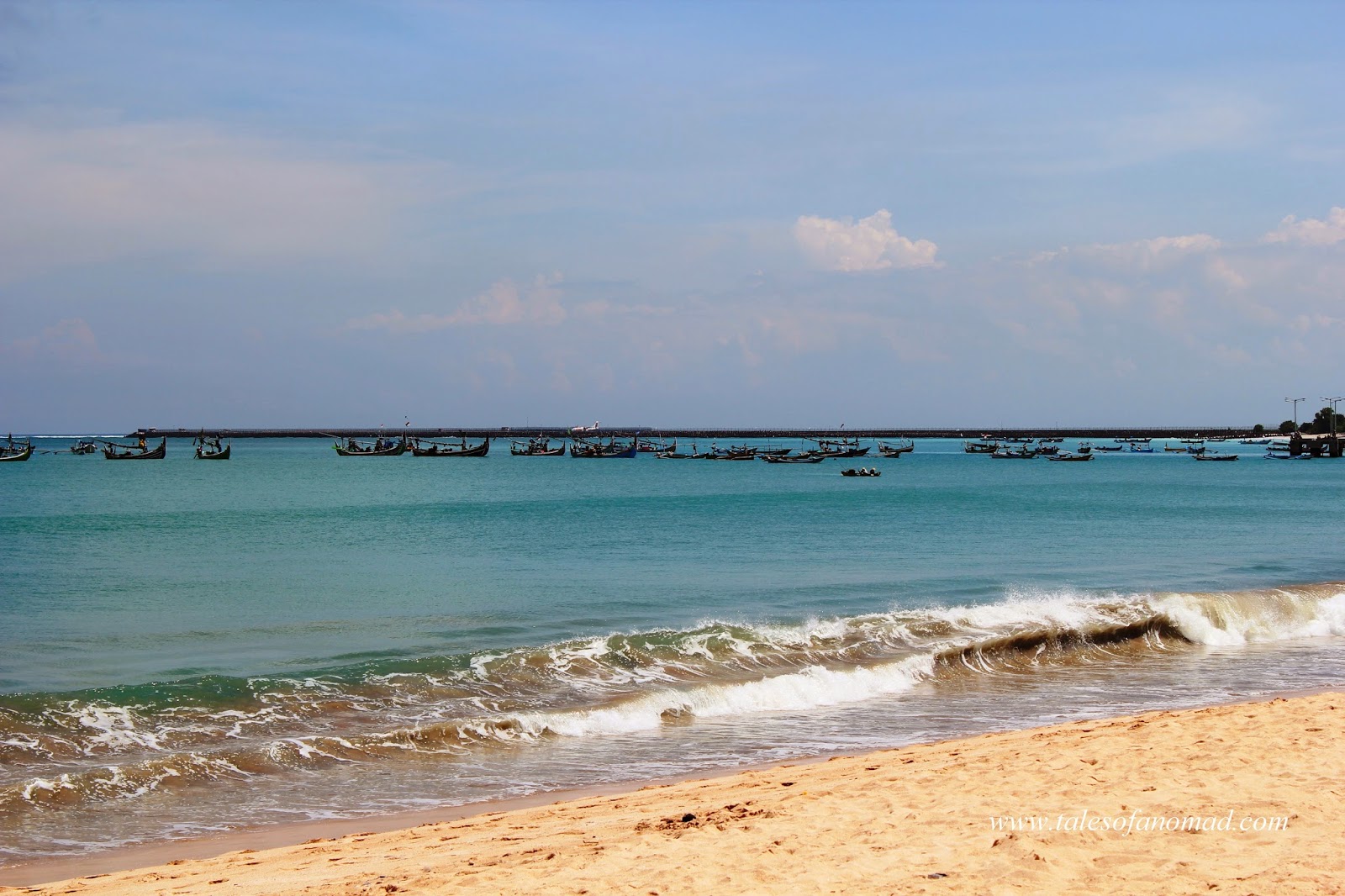 |
| Jimbaran beach |
Oriental and Continental cuisines are easily available at most restaurants. Nasi Goreng was my personal favourite, quite filling and not expensive. Capcay Goreng is another delicious dish that I loved. Bintang is the most popular beer in Bali followed by Bali Hai. For the coffee connoisseurs, Kopi Luwak, supposedly the world's most expensive coffee is available at certain cafes in Bali. However, the coffee powder (a blend of luwak and arabica, not the original variety) can be bought from any grocery store(For the curious minds, Kopi Luwak is made from the droppings of wild civet cat). The local Balinese coffee with a strong flavour is easily available at most cafes.
Balinese people are quite religious and make offerings to various gods every day. It might be just a few flowers or might be an elaborate one with flowers, fruits, biscuits, rice, chicken, chocolates and money. People are quite helpful and friendly. They love Indians and almost every Balinese I spoke to expressed their desire to visit India. Hinduism has great influence in their life and most of their dance forms like Kecak and Barong depict stories either directly or indirectly of Hindu gods and goddesses. A visit to any of the authentic spas for the ever popular Balinese massage would be the ideal way to end a wonderful holiday.
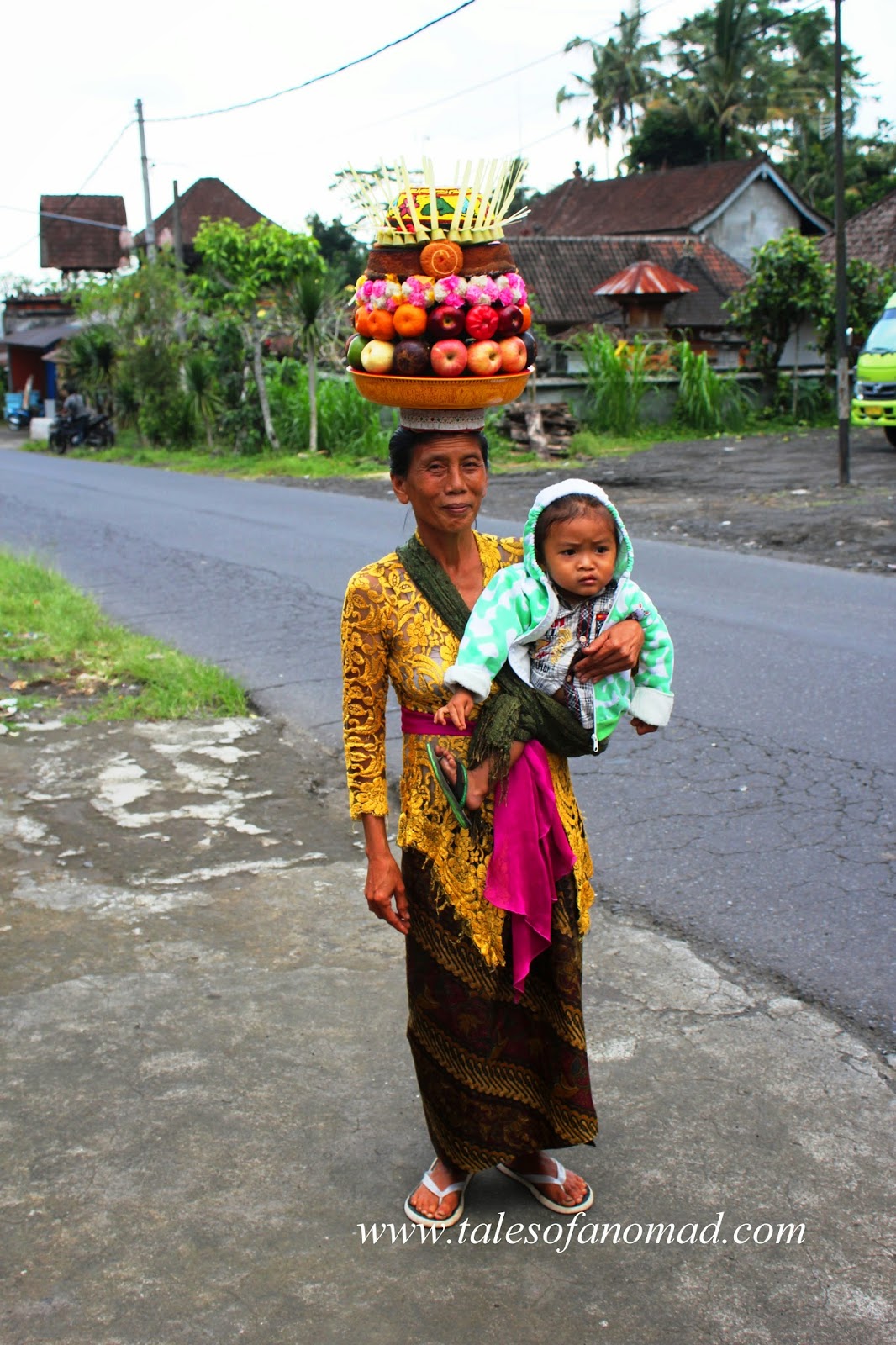 |
| A Balinese lady with her offerings |
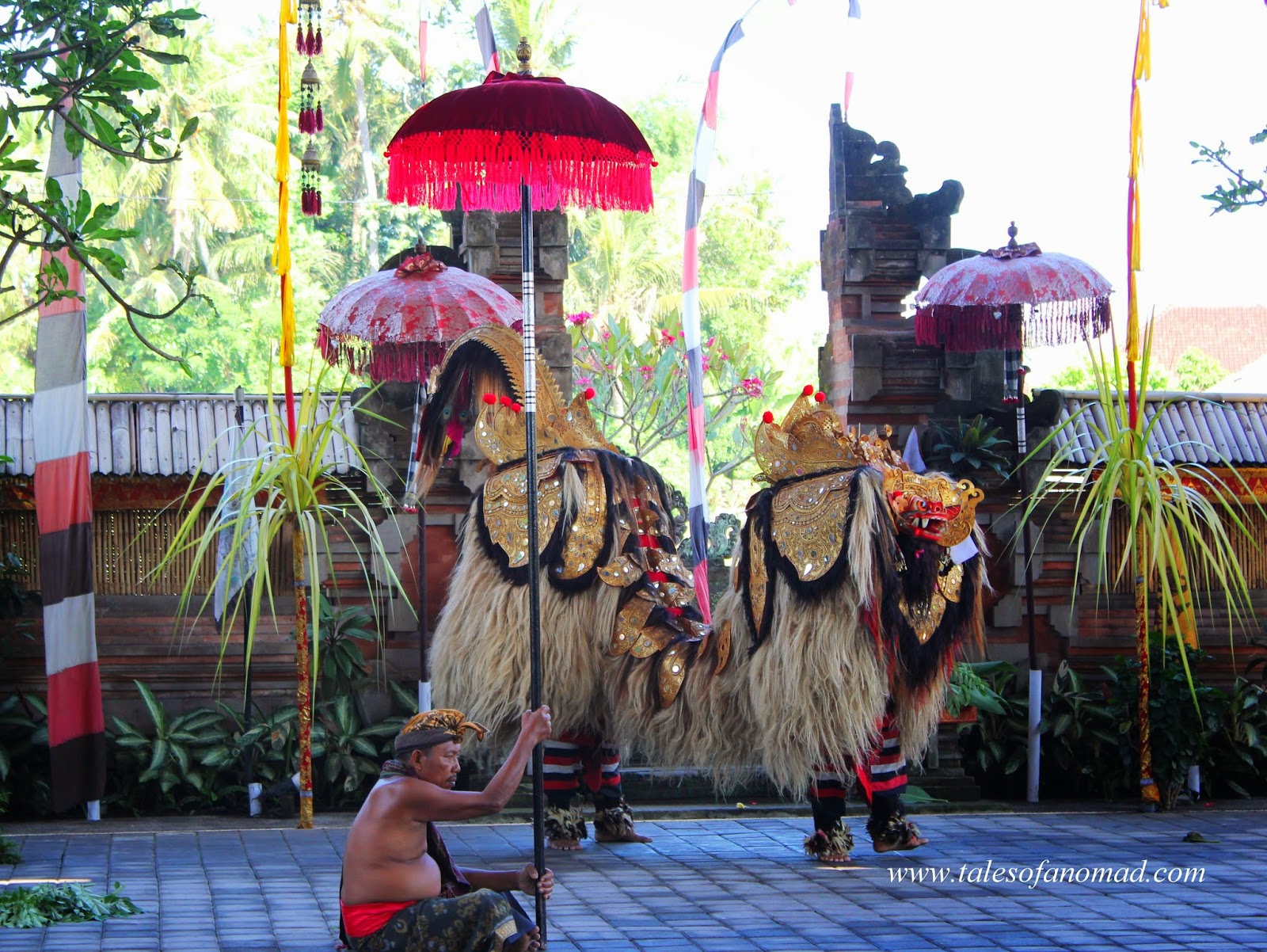 |
| Barong dance |
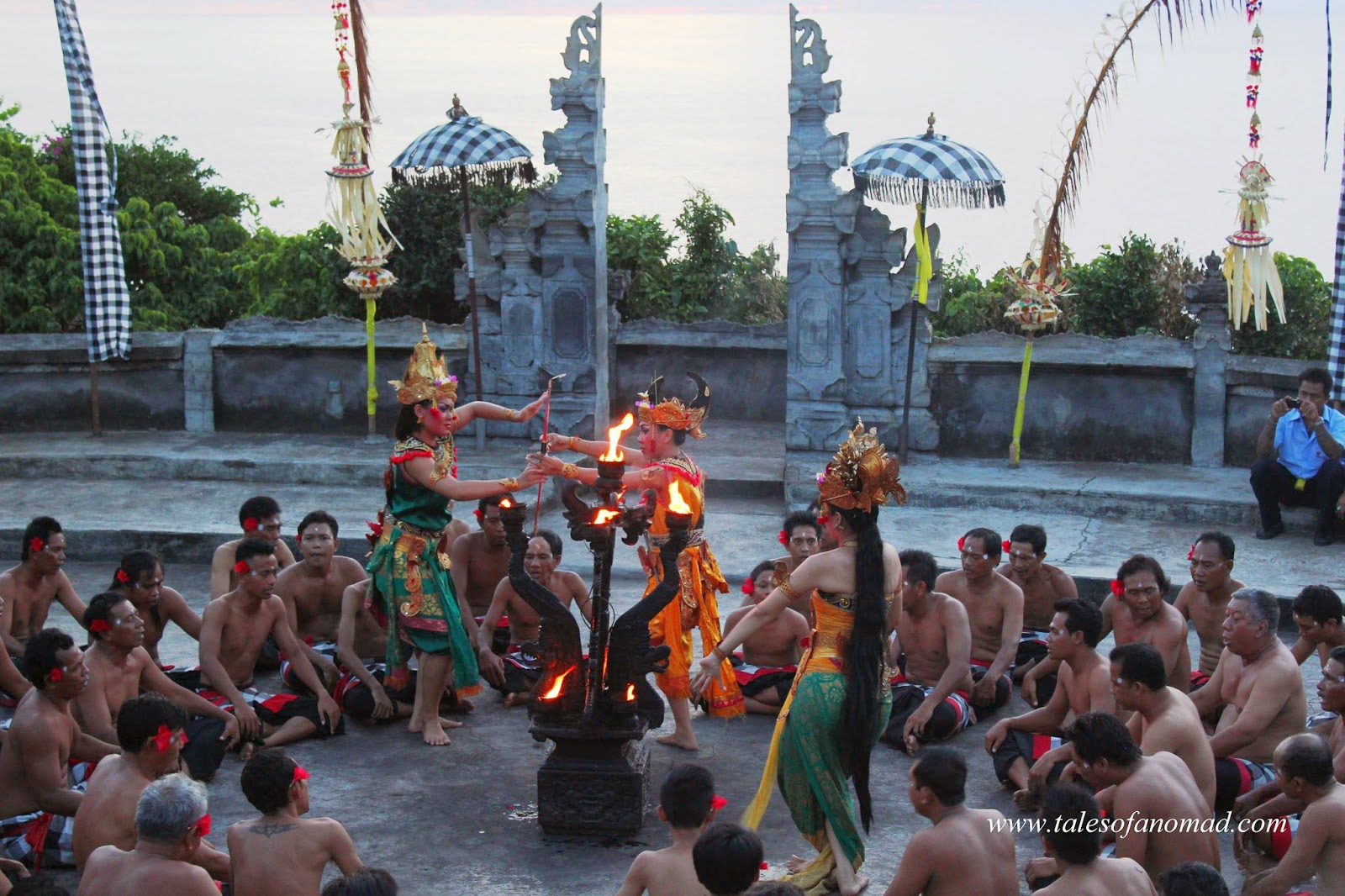 |
| Kecak dance |
Bali survives on tourism and most citizens either directly or indirectly makes a living off it. Denpasar is the largest city which houses all the government offices, while Kuta, Ubud and Seminyak stands out as the major tourist hubs. I did not find a single tall tower in Bali and when enquired, was told by my driver that government rules does not allow buildings more than three floors high. Public transportation is quite limited with very few buses. However, taxis are easily available and there are shuttle services to and from various tourist destinations at regular intervals. If you have an international licence, bikes are available on rental and is a hassle free mode on transport.
Dollars are widely accepted, but if you would like to pay in Indonesian rupiah ATMs are widely present and you can withdraw using an international card. Rupiah is available in denominations as high as one lakh due to its conversion rate. 1 Indian rupee is approximately 190 Indonesian rupiah. Europeans and Australians are the most visited tourists in Bali and most shops price their products accordingly. Make sure to haggle hard at most places.
Signing Note- Bali lures, captivates and then leaves you spellbound...!!

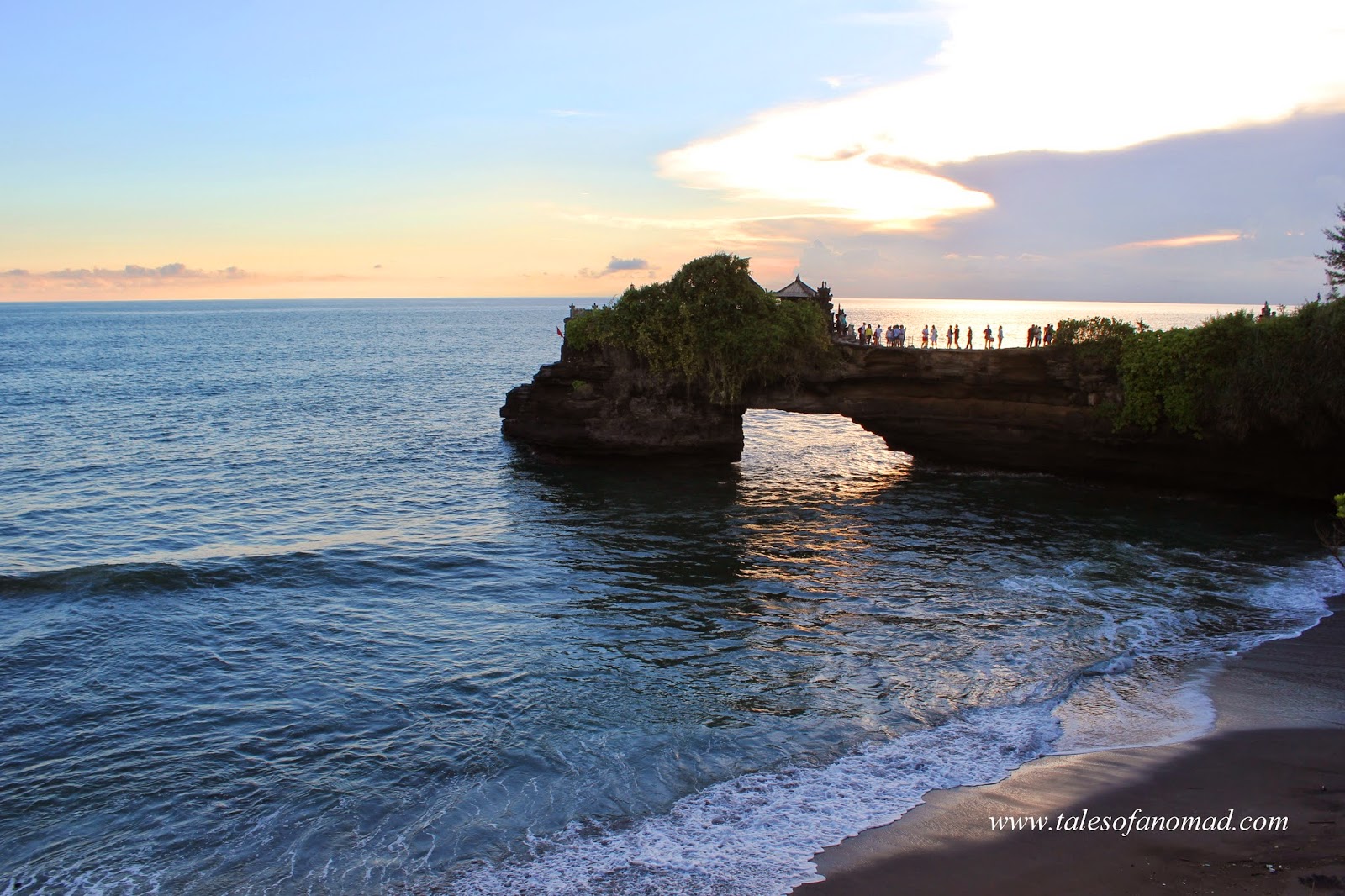










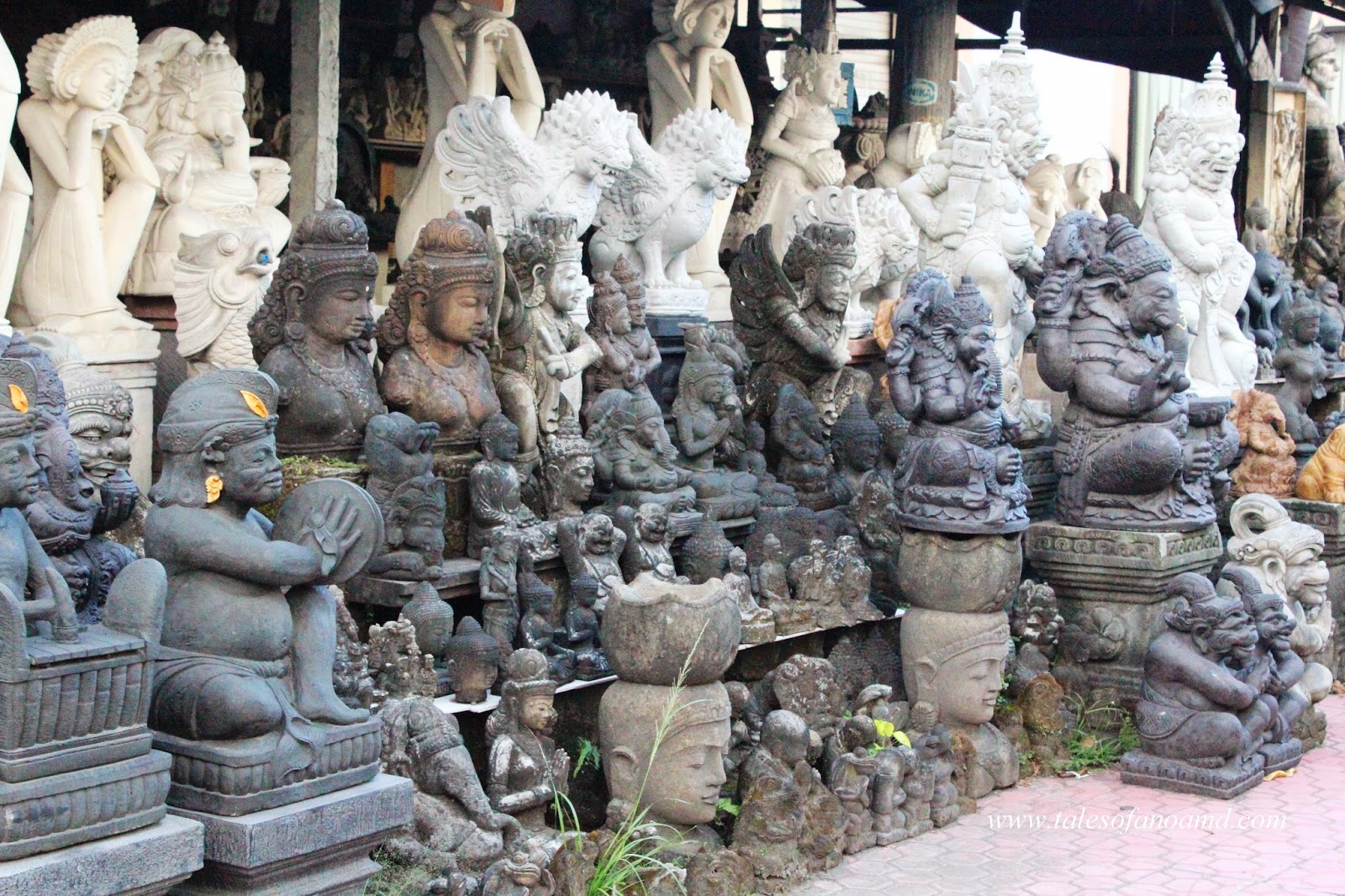












0 comments:
Post a Comment